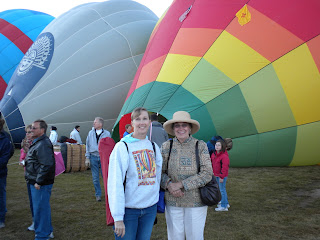
After my arrival home from shopping with this bounty, I washed and then rinsed in bleach all the items, including the can of tomato paste and the smoked fish.
The following day she arrived for my cooking lesson. Our biggest disconnect was my need to measure items in teaspoons and cups, which is absolutely foreign to them. Recipes happen based on "look, smell, and experience." When I began to record the steps of our cooking and asked her how many cups of rice we needed, I got a polite smile and a muffled giggle.
We made Jollof Rice - which contains onions, tomatoes, tomato paste, small green chiles, small red chiles, garlic, ginger (African ginger is HOT), fish, rice, cabbage, green beans, carrots, green onions, bell peppers, oil, and water. It is a 2 hour process, but very worth it. We made enough to feed a small army.
We also made Okra Stew. Okra are season right now and you see them everywhere. I'm very fond of fried okra. You can't find that here. For this dish we used a chicken, onions, small green chiles, ginger, garlic, 20 chopped okra, 10 garden eggplant (imagine very small white eggplant), African spinach, red oil (palm oil), salt, bouillon and water. This dish took an hour to prepare. Boiled okra is slimy, no matter how you cut it, so you'll just have to imagine that when you think about eating this.
 Making fufu was a bit like making play dough. To begin, I mixed together with my hand the cassava, maize and water to a smooth consistency (like making mud pies as a girl). Then we began to cook it, stirring constantly as it changed color (from white to light yellow) and thickened. I was amazed how much work it was to beat this dough as it cooked. I was cautioned that you must always cook this at least 40 minutes or you will get terrible diarrhea. Having received the warning, I cheerfully continued to cook and beat the dough.
Making fufu was a bit like making play dough. To begin, I mixed together with my hand the cassava, maize and water to a smooth consistency (like making mud pies as a girl). Then we began to cook it, stirring constantly as it changed color (from white to light yellow) and thickened. I was amazed how much work it was to beat this dough as it cooked. I was cautioned that you must always cook this at least 40 minutes or you will get terrible diarrhea. Having received the warning, I cheerfully continued to cook and beat the dough.
I invited her to stay for dinner. She had to go before Gregg would get home, so she ate immediately. The way the locals eat this meal is with their hands, which was fine with me. It was very interesting to watch her pinch off the dough and dip it in the Okra stew. She was very pleased with the outcome of our project. Gregg, who will eat just about anything, thought it was great!






















































